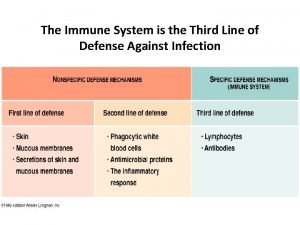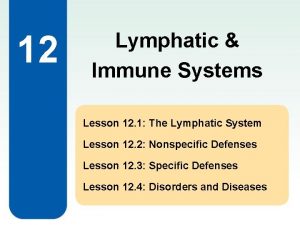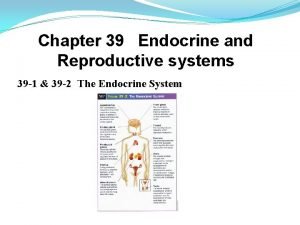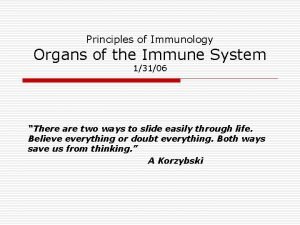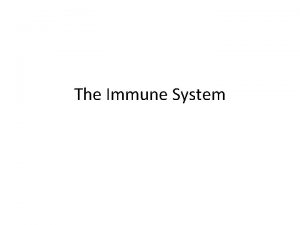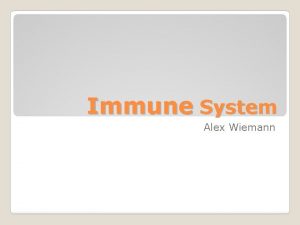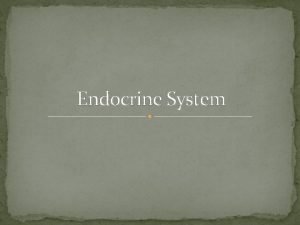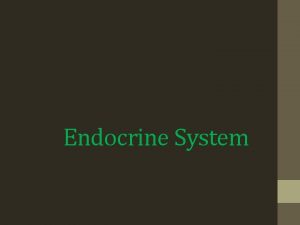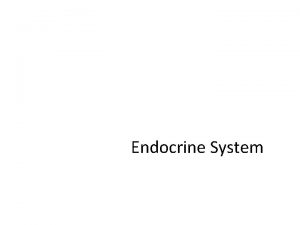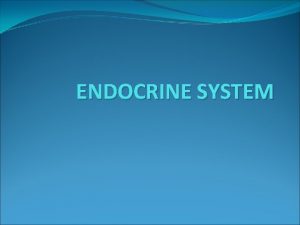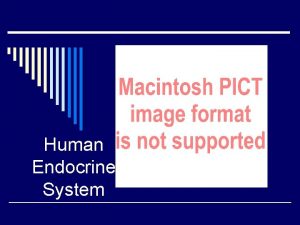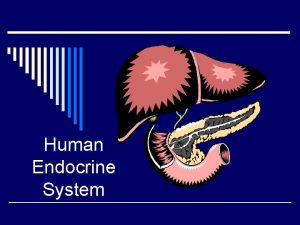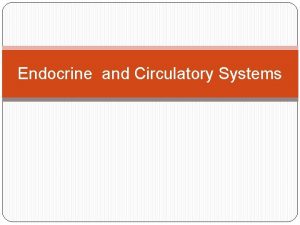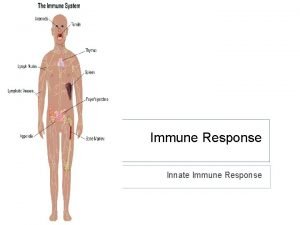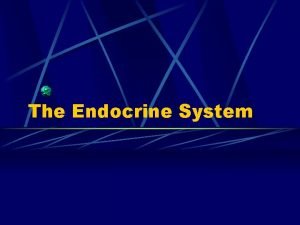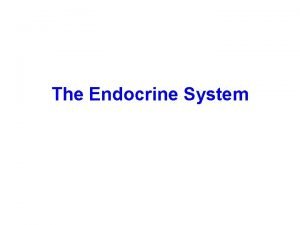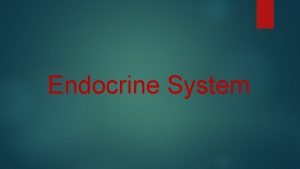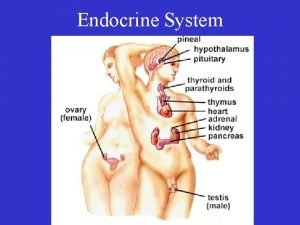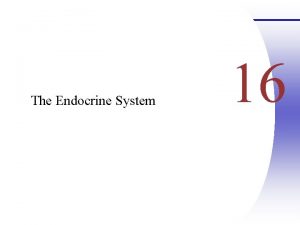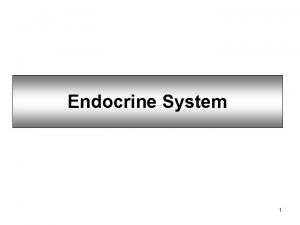Human ENDOCRINE AND IMMUNE Systems Endocrine system Structure






















- Slides: 22

Human ENDOCRINE AND IMMUNE Systems

Endocrine system • Structure: glands make hormones • Function: Controls body functions; keeps body working properly

ENDOCRINE GLANDS

Adrenal glands • Adrenaline (epinephrine) – speeds up heart, breathing rates. • “Fight or flight” syndrome – fight for survival or run from danger.

Pancreas • Regulates blood sugar levels. • Insulin – decreases “ “ “ • Glucagon – increases “ “ “

Thyroid gland • Regulates metabolic rate (rate at which you use E).

Parathyroid glands • Secrete parathormone • Regulate Ca 2+ levels in blood.

Ovaries, Testes • Sex hormones – turn children into adults (puberty). • Make reproduction possible.

Pituitary gland • Many hormones • “Master Gland” • Regulates many other glands.

Factoids: • Imagine your body without glands. You'd be without all the ooze, sweat, mucus, chemicals and juices in your body that make your body “home. “ • For girls, puberty generally begins at 913 years of age. For boys, it usually begins at 10 -15 years of age.


THE Immune system • Protects body from diseases, toxins An immune cell undergoing an allergic reaction

IMMUNE SYSTEM

Macrophages • Engulf & eat microbes, viruses

T-cells • Coordinate the immune response

B-cells • Make antibodies – proteins that attach to specific antigens (pathogens). • Each pathogen (disease-causing organism) stimulates body to make a different antibody.




Fever • Body temp. increases a few degrees. • Slows growth of some pathogens. • Helps B cells, T cells reproduce faster.


THE END
 Primary immune response and secondary immune response
Primary immune response and secondary immune response Chapter 24 the immune and lymphatic systems and cancer
Chapter 24 the immune and lymphatic systems and cancer The lymphatic capillaries are
The lymphatic capillaries are Thalassemia autosomal recessive
Thalassemia autosomal recessive First line of defense
First line of defense Endocrine system and reproductive system
Endocrine system and reproductive system Endocrine system
Endocrine system Endocrine system vs nervous system
Endocrine system vs nervous system Chapter 35 immune system and disease
Chapter 35 immune system and disease 1st 2nd and 3rd line of defense immune system
1st 2nd and 3rd line of defense immune system Lesson 12.1 lymphatic ducts and vessels
Lesson 12.1 lymphatic ducts and vessels Lesson 12 blood and immune system
Lesson 12 blood and immune system Tonsil
Tonsil Section 39-4 fertilization and development
Section 39-4 fertilization and development Module 10 the nervous and endocrine systems
Module 10 the nervous and endocrine systems Lympathic
Lympathic Mechanism of hormone action
Mechanism of hormone action What is the third line of defense in the immune system
What is the third line of defense in the immune system Hangman flowchart
Hangman flowchart Third line of defense immune system
Third line of defense immune system Innate immunity first line of defense
Innate immunity first line of defense Ap bio immune system
Ap bio immune system Oobean
Oobean




